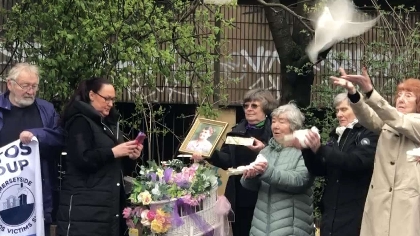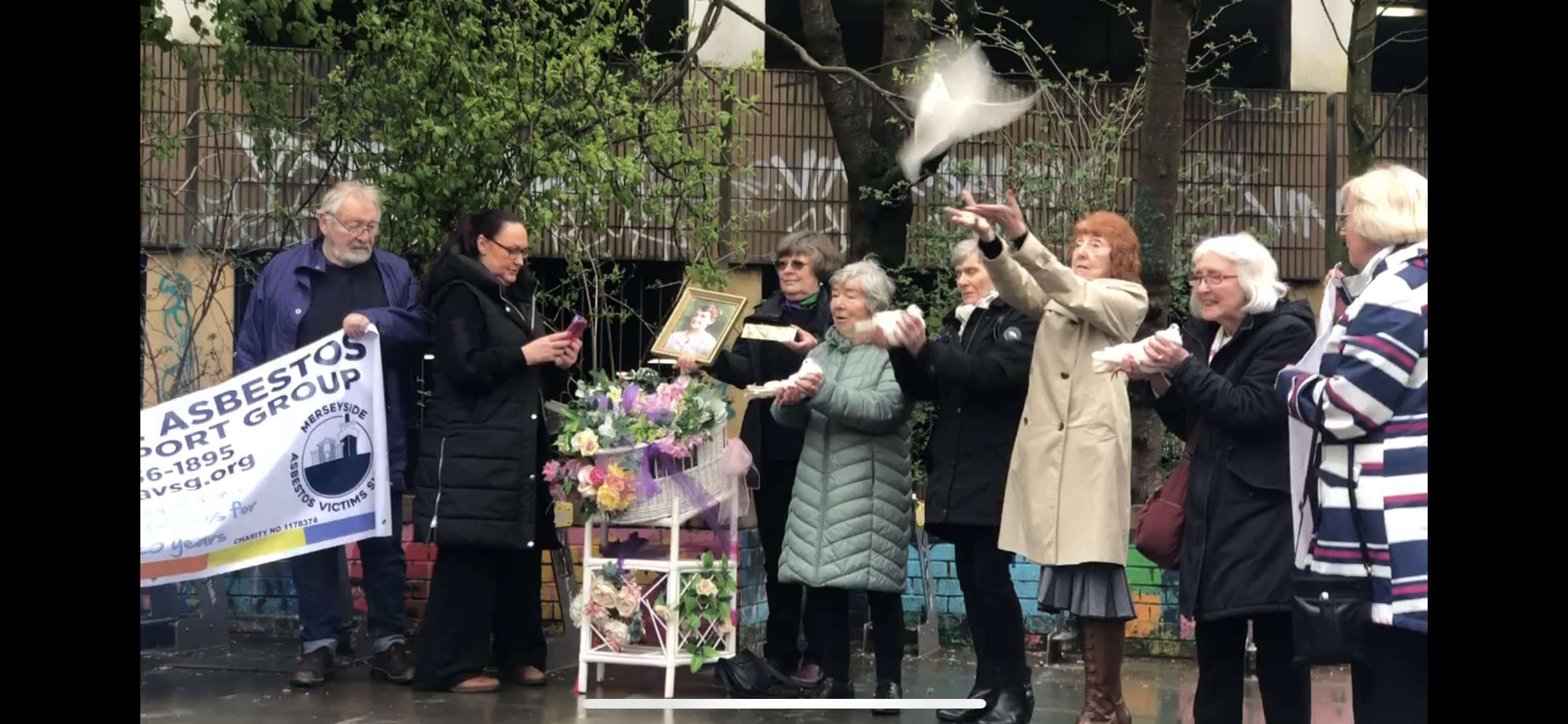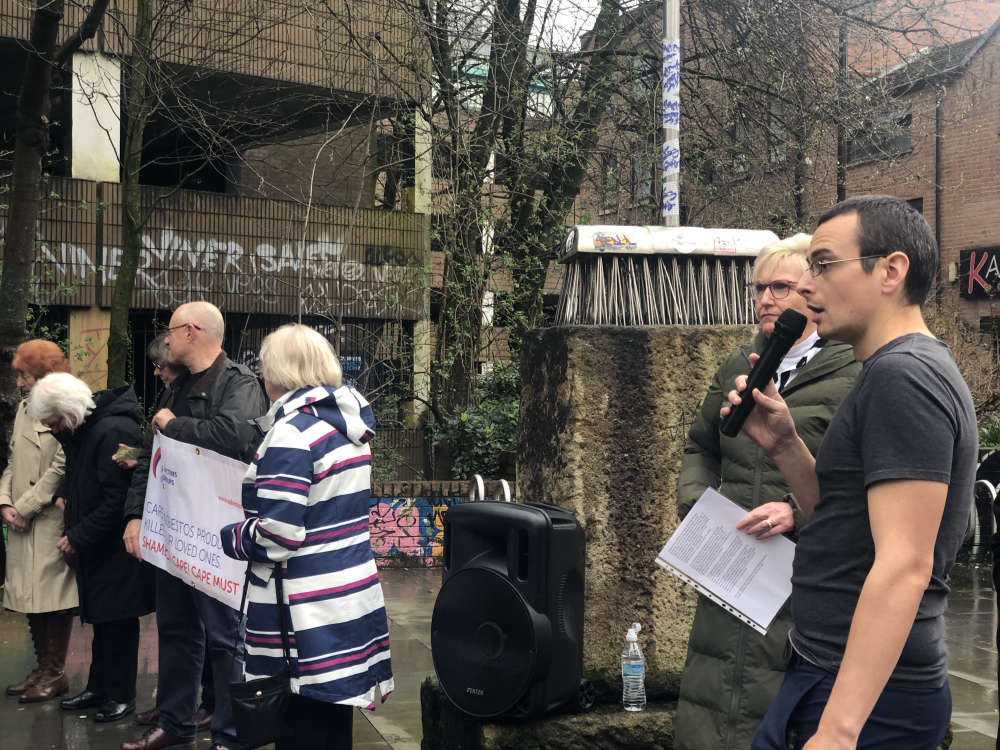
On the 14th, residents from across Manchester came together at Tibb Street in the Northern Quarter to remember those lost to asbestos disease and to raise awareness for those battling with it now, and marked a solemn anniversary.
Asbestos is a mineral that occurs naturally on earth, and the history of its’ usage dates back thousands of years. It has been used for a long time thanks to the insulating properties and the strength of the fibres found within.
It took until the age of industrialisation in the west, when mills and many other industries used asbestos to insulate the properties, that the dangers of the mineral became apparent.
And there was perhaps no event that highlighted the danger of the mineral like the death of Nellie Kershaw, a Rochdale mill worker, who died in March 1924. The mineral is now banned in the UK, but after Nellies’ death no action was taken to ban it for another 75 years.
Unfortunately, this means that the effects are still felt across the places asbestos was used most.
The event that was held last Thursday commemorated 100 years since Nellies’ death, and also paid respect to those that lost their battle with asbestos diseases and those currently battling them.
Speeches were given on the day by people who had lost somebody to an asbestos disease, and doves were also released in a poignant moment of remembrance for those who had lost their lives.

The Greater Manchesters’ Asbestos Victims Support charity was the charity behind the event, and we spoke with Rob Rayner from the charity about the day and the need to recognise the dangers asbestos still poses.
“I cannot think of a group of people more in need of help than people living with asbestos disease,” Rob said. “But we will one day reach a point where we are free of asbestos disease. But I regret to say that they will continue for decades, and they won’t be eliminated in our lifetimes.”
The diseases most commonly associated with asbestos are asbestosis and mesothelioma. Asbestosis and mesothelioma are not the same, but both are caused by asbestos exposure. Asbestosis is a non-cancerous lung disease that leads to the scarring of lung tissue, whilst mesothelioma is a rare cancer that develops in the lining of the lungs or other body parts.
Manchester has been a hotspot for both asbestos related diseases for the last twenty years, with the disease being able to go unnoticed from first point of contact with a victim for around forty years. The worst affected areas are boroughs with a previous industrial landscape, and unfortunately Tameside is one of them.
“Tameside is a huge hotspot, with mills that had risks of fires breaking out, and the steampipes being lined with asbestos back in the day.” Rob said. “Major heavy industries as well all used asbestos and employed thousands, so a lot have fallen ill from the Tameside and Glossop areas.”
Outside of the commemorative event, the Greater Manchester Asbestos Support Victim charity do a lot to support those impacted either firsthand or secondhand. Rob told us more about the great work they do year-round.

“You are entitled to industrial injuries benefits from the government when you have a diseased caused by work in this country.” Rob said. “This money is important to people, but it is not always easy to get, and a lot of our time as a charity is spent getting people that money that they need. In terms of emotional support we run a support group for people with mesothelioma which is a terminal cancer caused by asbestos, and the other group is for people who have lost someone to asbestos diseases, which is normally women who have lost men, and they support each other magnificently through what is a difficult time for them.”
The group have campaigned and fundraised for people across Manchester and for justice from those that did not pay out for when asbestos illnesses occurred. Rob voiced his opinion on what local council and further what the government should be doing to rid the country as a whole of the issue.
“I think locally the councils have a responsibility to manage these buildings but even some council buildings that were thrown up in the 60s and 70s when the local authorities had money to spend. In the long term for the country we should be having a strategy to get the asbestos out of buildings as as the buildings age they crumble and people will be breathing in the dust. I believe this is needed as a national plan as I believe local governments do not currently have the resources to do it.”
Tameside council offered comment on what they are doing to tackle asbestos cases found across many of the boroughs buildings, with a spokesperson from the council telling us “the council manages the presence of asbestos in Tameside Council buildings in line with the requirements and duties imposed by the Control of Asbestos Regulations 2012. An appropriate asbestos survey is carried out for each building and, where asbestos containing materials are located, any remedial actions are based on the recommendations of the surveyor. Where asbestos is assessed as being in good condition the recommendation is usually to either encapsulate it or manage it in situ. Where there is a requirement to remove asbestos containing materials this will be done by an approved contractor.”
Whilst asbestos diseases will continue to cause problems for years to come, the work from local councils and the Asbestos Victims Support Charity will keep on going to rid Tameside and further afield of asbestos.



 Curzon under 7's raise £5K for Cancer Research UK
Curzon under 7's raise £5K for Cancer Research UK
 Rail chaos coming on Sunday
Rail chaos coming on Sunday
 Rotary club steps up to rebuild reading shed for tornado-hit school
Rotary club steps up to rebuild reading shed for tornado-hit school
 Mum pays tribute to 'role model' son, 15, following death
Mum pays tribute to 'role model' son, 15, following death

